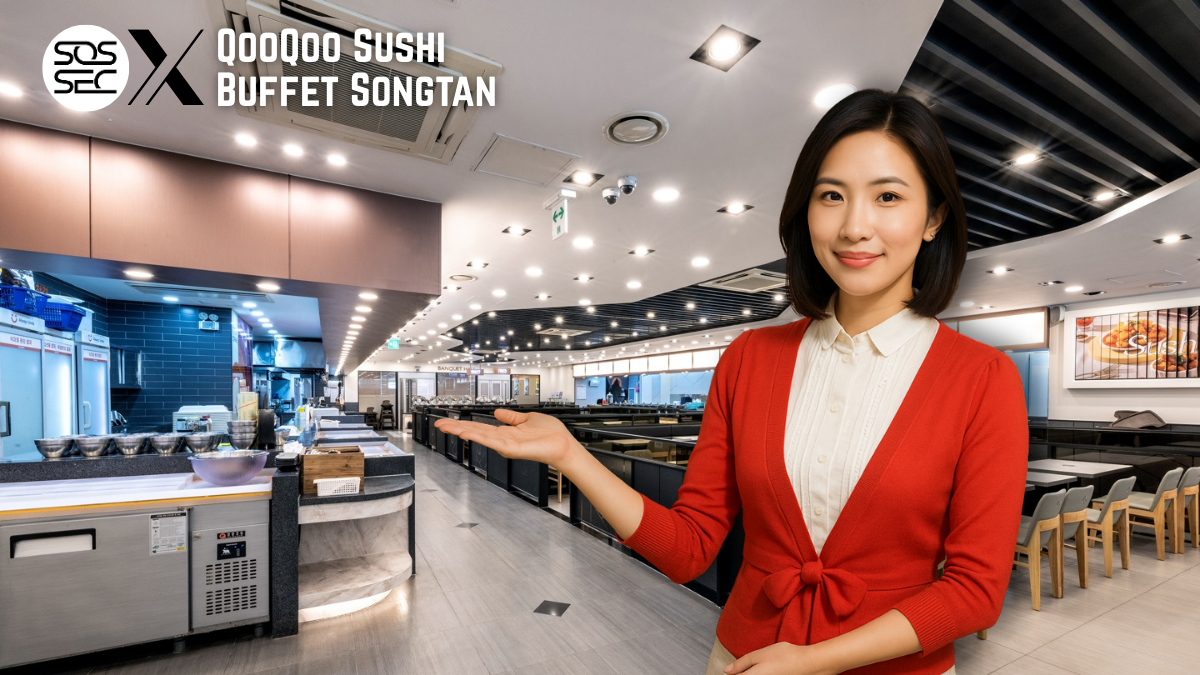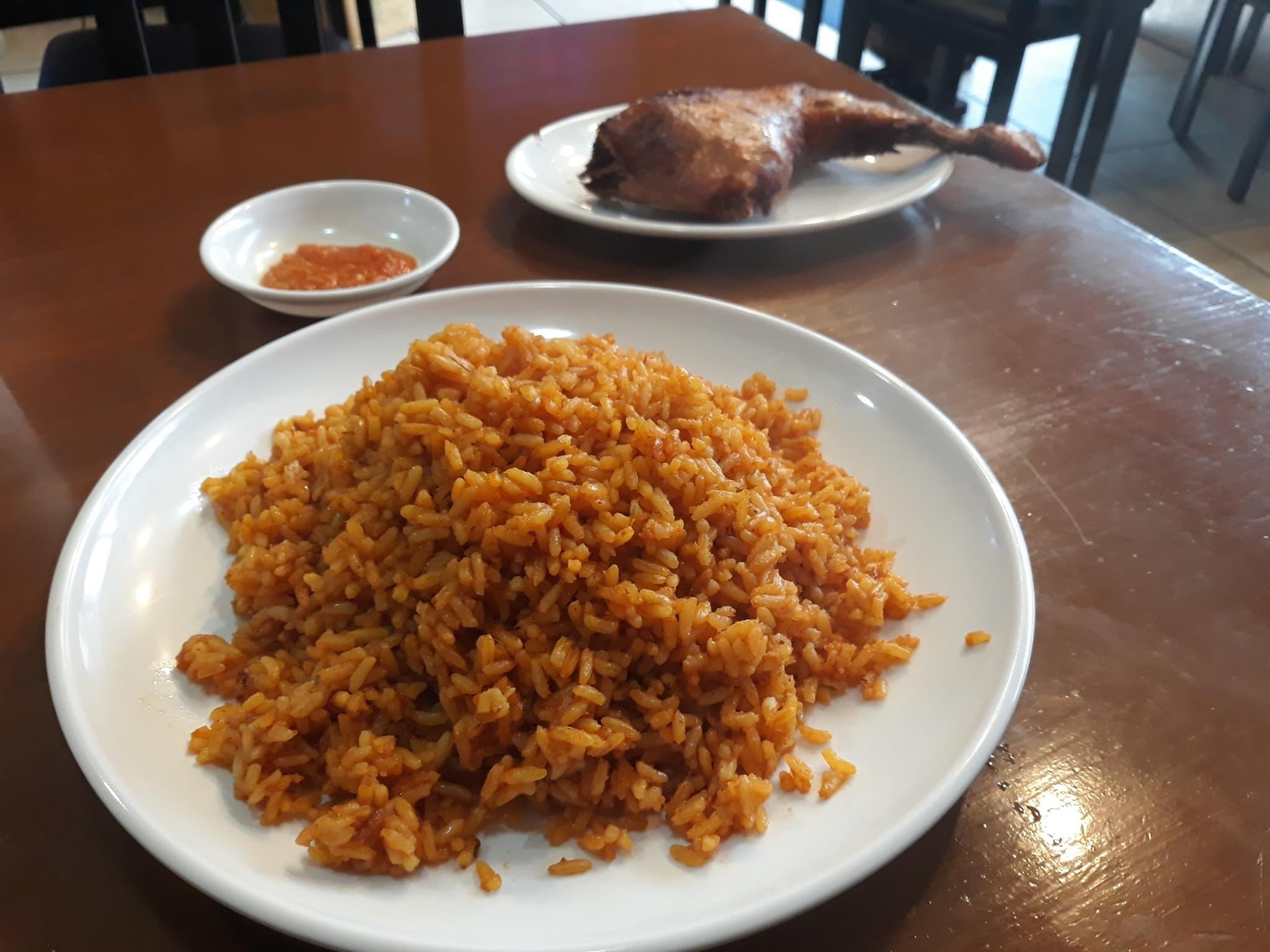
Guide to Buffets in Korea: What to Expect
Did you know that Korean’s LOVE buffets and they are popular across the country! Recently, we sat down with the Songtan branch of QooQoo Sushi & Salad Buffet in Pyeongtaek-si, and they shared some tips for getting the most out of your buffet experience! They also sponsored this post to help support international residents living in Korea.
Table of contents
Buffets are Ideal for Foreigners in Korea
Buffets in Korea provide a place for culinary exploration with a safety net. Moving to or traveling in South Korea is exciting; however, eating out sometimes feels a little intimidating. Nobody wants to rely on “something new” when the whole family is hangry. Plus, you don’t have to. Instead, head to the buffet where you can mix adventure with comfort foods.
Of course, going to a buffet still holds some elements of culture shock. Thankfully, The Songtan QooQoo Sushi Buffet stepped up to help create this blog of tips. They’ve been serving international residents for many years and they’ve identified a list of pointers that help people feel more comfortable. We will start with the basics and get more specific.
Key Benefits of Buffets for International Residents
- Less language barrier stress: You don’t need to order in Korean. Just point and choose.
- Lots of options: Whether you’re craving something familiar or adventurous, you’ll find it.
- Family-friendly: Buffets often have kid zones or foods even picky eaters will enjoy.
- Budget-friendly variety: You can try many different dishes for one set price.
What Is a Buffet in Korea Like?
A buffet in Korea is similar to buffets you might know back home, but with some Korean details. So expect things to feel familiar, but organized in new ways. Just like many other countries, you’ll find long counters filled with dishes, many of them Korean fusion-style. Just like the US puts it’s own twist on foods from other countries, so does Korea.
Common buffet menu items might include:
- Rice and noodles (like fried rice or japchae glass noodles)
- BBQ meats such as bulgogi or grilled chicken or ribs
- Soups and stews that change with the season
- Fresh vegetables and salads
- Western comfort foods like pizza, fries, or pasta
- Fried foods like French fries, chicken wings, and more
- Desserts and fruit for a sweet ending but not as many dessert options as many buffets in the North America.
- Sushi rolls and Sashimi
The best part is that you can try a little bit of everything. It’s a fun way to explore Korean food and Korean versions of global foods without needing to order a whole dish you’ve never tried before.
How Do Buffets Work in Korea?
Generally speaking, the customer service experience will go step-by-step:
- Find Your Table: The staff may guide you to your seat, but often you find your own. Many buffets may have areas for families, groups, or even private rooms. So if you are a family, look for the playroom before sitting down. For example, at the Songtan QooQoo they have a family dining area separate from the main dining room.
- Start with a Plate: Grab a clean plate and head to the buffet line.
- Find the Utensils: Buffets generally offer both Korean and Western utensils so everyone can use what feels comfortable.
- Self-Service Style Drinks: Non-alcoholic drinks are usually self-serve, often simply labeled “self.”
- Alcoholic Drinks from a Server: Many buffets offer a menu for soju or beer that you can purchase in addition to your meal. QooQoo in Songtan even offers a free-refill beer add-on.
- Try a Bit at a Time: To start, take small amounts of different dishes. Even if it looks familiar, try it first. Food tastes different around the world. You can always go back for more.
- Time Limits: Buffets and all-you-can-eat restaurants usually have a time limit posted. It’s often between 1.5 – 2 hours. This gives you plenty of time to enjoy the buffet in a relaxed way.
- Pay When You Leave: Buffets generally place a little book with a receipt on your table. When you finish your meal, take that little book to the desk at the entrance of the restaurant.
- Parking: Many buffets, including the Songtan QooQoo, offer free parking if you park in the correct parking lot(s). To get free parking, show the cashier a picture of your license plate or write down the last 4 numbers for them. This will allow them to validate your parking in their system.
Additional Buffet Tips
Now that you understand the process for using the buffet, let’s talk about some of the small details you might want to know.
Plates Down Below
Plates often sit below the food on shelves instead of on the same level as the food. If you can’t see the plates and bowls, step back and look down. It you don’t see plates or bowls on the ledge below, you can ask a server. Sometimes they run out of plates and can run get more for you.

Some Dishes Made to Order
Korean buffets often have dishes made to order. These dishes may change day-to-day or by season. Keep your eye out for special foods you can order hot. If you can’t speak Korean, use Papago or ChatGPT to help with communication.

Gloves and Aprons
Some food may feel hard to handle with utensils, like ribs or chicken wings. In this case, you can often find gloves sitting near the utensils or request gloves from the servers. These take away the mess! Great for kids as well. Highly recommend using these.

Additionally, you can request aprons for adults and kids to protect your clothing. Don’t hesitate to do this. Because of all the red and spicy foods in Korea, using aprons is common and acceptable for adults. Don’t be a hero.
Kids Playrooms
Always remember that kids play areas will have a few rules. Look around for signs and translate them using Papago or ChatGPT.
Rules to expect include:
- Age limits: often around 7 hears old but always check as this varies between locations.
- Shoes: kid’s can’t wear shoes in the play area. They can take them off at the door. This means Korean families almost always carry socks for their kids.
- Food: No food in the play areas so that they can stay healthy and clean for the next family.
Buffets often post their rules next to the door and they can easily be translated using Papago or ChatGpt. The following images shows the rules at the Songtan Branch of QooQoo Suchi Buffet.

Menu Pricing
Buffets often offer discounts based on weekdays v weekends. Weekends are often more expensive and weekdays cheaper. Additionally, on the weekends the buffets may offer additional menu items.

Eating Time Limits
Buffet restaurants in South Korea often have a time limit. The limits range between 1-2 hours. The time limit is often clearly listed on the menu. Keep your eye on this limit because if you go over the time period, you may be automatically charged again. This means you don’t want to just, “Hang out.” Keep this in mind when waiting for someone who arrived late to a group dinner.
The time you started your buffet will usually be on the receipt that they place on your table. You can check your arrival time there.
Wasted Food Fee
Some buffets in South Korea may charge fees for wasting food. This means you need to take what you can eat within reason. The wasted food fee may run between 10,000 KRW to 20,000 KRW.
Allergy Warnings
Korea requires restaurants to post a list of foods that cause allergies used in their kitchens. This will be posted as one sign rather than by dish. The QooQoo list is shown below. Some restaurants may only have the words listed. You can use Papago or ChatGPT.
Keep in mind, the list is for the WHOLE menu not menu items. This means they don’t list ingredients by dish like they might in other countries. It’s a general list that covers everything they make.

Tips for Your First Visit
- Go during non-peak hours if you want a quieter experience.
- Look around before filling your plate because there’s usually more food than you expect.
- Don’t be afraid to mix Korean and Western items.
- Save room for dessert Korean buffets love finishing sweet!
A Note About QooQoo Songtan
While buffets are welcoming everywhere, some go the extra mile to make international residents feel comfortable. QooQoo Songtan is one of those places. They offer two hours of free parking nearby, serve freshly prepared food daily, and recently upgraded their Kids Zone and BBQ Zone.
Additionally, when QooQoo Sushi Buffet in Songtan noticed South of Seoul listed their business in local blogs and shared them in the Pyeongtaek Food & Fun Group, QooQoo in Songtan reached out to SOS SEC (we partner with South of Seoul) to see how they could support the international community.
The Sponsored Integration Content
After learning about our mission to promote easy and comfortable cultural integration, QooQoo in Songtan offered to sponsor this blog post to help international residents feel more comfortable at buffets.
They also placed ads with SOS SEC that run on the South of Seoul blog and pay for the hosting and admin fees to keep South of Seoul running so that volunteers don’t need to cover these costs. We deeply appreciate this support so that SOS SEC and South of Seoul can continue to serve the community.
QooQoo Sushi buffet in Songtan shares our goals: to help international residents feel at home in Korea. If you’re in the Songtan area and want your first buffet experience to be stress-free, QooQoo is ready to welcome you.

QooQoo Sushi Buffet Songtan
031-667-6274
Copy and paste phone numbers into Naver Maps to get directions
Hangul Name:
쿠우쿠우 송탄점
Hangul Address:
경기 평택시 경기대로 1407
Description:
QooQoo (KooKoo) Songtan is a large, family-friendly sushi and buffet restaurant located in the heart of Songtan. With a wide variety of sushi, Korean dishes, fried foods, desserts, and a kids' zone. It’s a popular spot for group gatherings and special occasions. The restaurant offers 2 hours of free parking at Buraksan Public Parking Lot nearby. They also have all their menu items labeled in English and English signs to help you navigate the restaurant better. QooQoo Songtan take the extra step to sponsor content that helps support the international community in Korea.
Additional Reading Recommendations
If you found this post useful, also read the following:

ENG:
South of Seoul Strategy and Education Consulting (SOS SEC) in a Korean company that specializes in bridging the gap between Korean culture and other diverse cultures. With a profound understanding of the complexities and nuances of cultural dissonance, SOS SEC is dedicated to facilitating meaningful connections and fostering mutual understanding between individuals and businesses. SOS SEC partners with the South of Seoul Blog to provide Korean businesses the opportunity to present their organizations to the international community in Korea through Sponsored Posts.
All SOS SEC-created content featured on the South of Seoul blog is paid content.
KOR:
South of Seoul Strategy and Education Consulting (SOS SEC)는 한국 문화와 세계 각국의 다양한 문화를 이어주는 다리 역할을 하는 한국 기업입니다.
SOS SEC는 문화 차이 속에서 발생하는 복잡한 문제와 뉘앙스를 깊이 이해하고 있으며, 이를 바탕으로 개인과 기업이 서로를 더 잘 이해하고 연결될 수 있도록 돕고 있습니다.
또한 South of Seoul 블로그와 협력하여, 한국 기업들이 스폰서드 포스트(Sponsored Posts)를 통해 한국에 거주하는 국제 사회에 효과적으로 자신들의 브랜드와 조직을 알릴 수 있는 기회를 제공합니다.
South of Seoul 블로그에 게재되는 SOS SEC 제작 콘텐츠는 모두 공식 유료 콘텐츠로, 한국 기업이 국제 사회와 더 가까워질 수 있도록 돕는 맞춤형 홍보 솔루션입니다.





